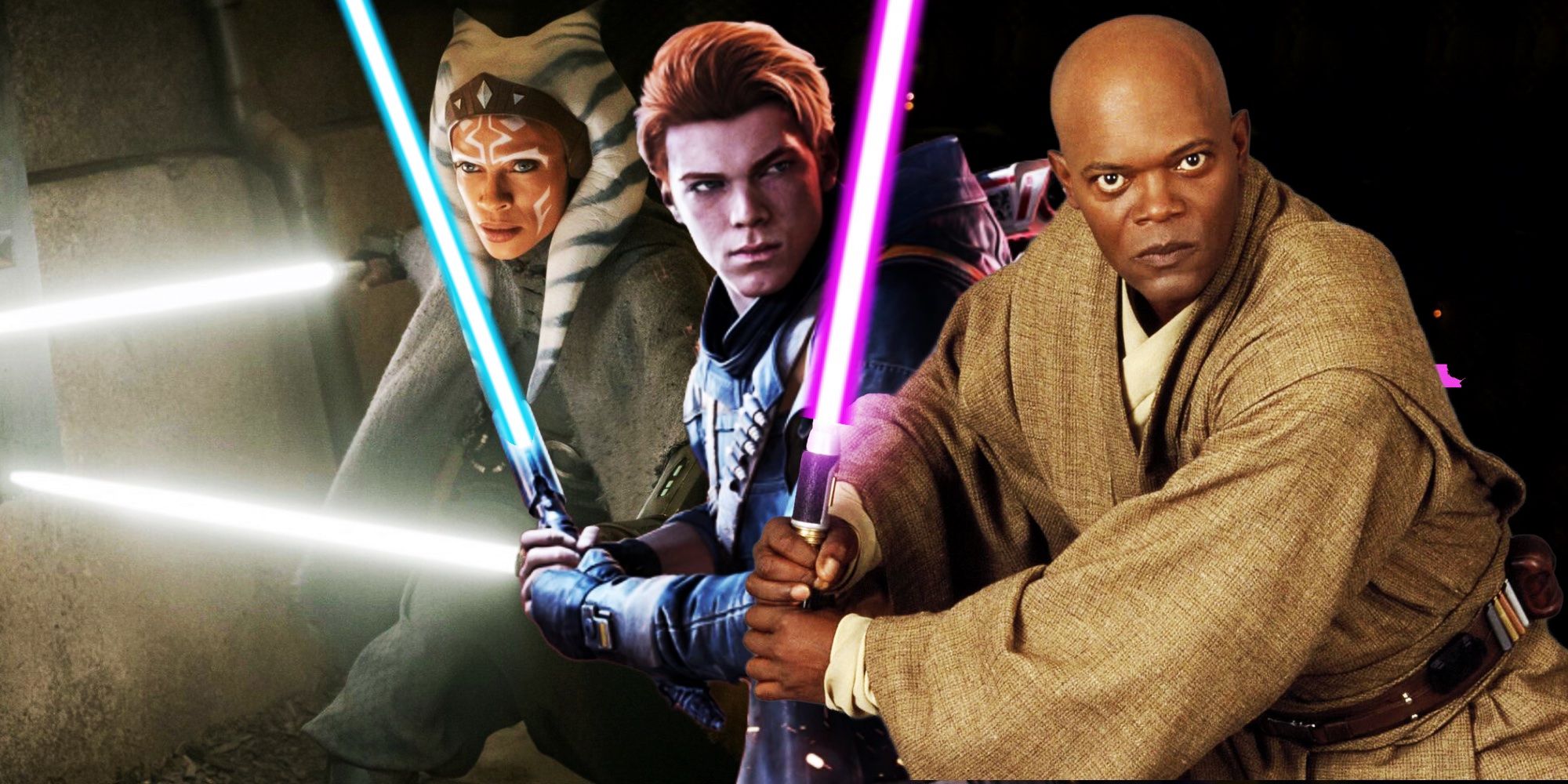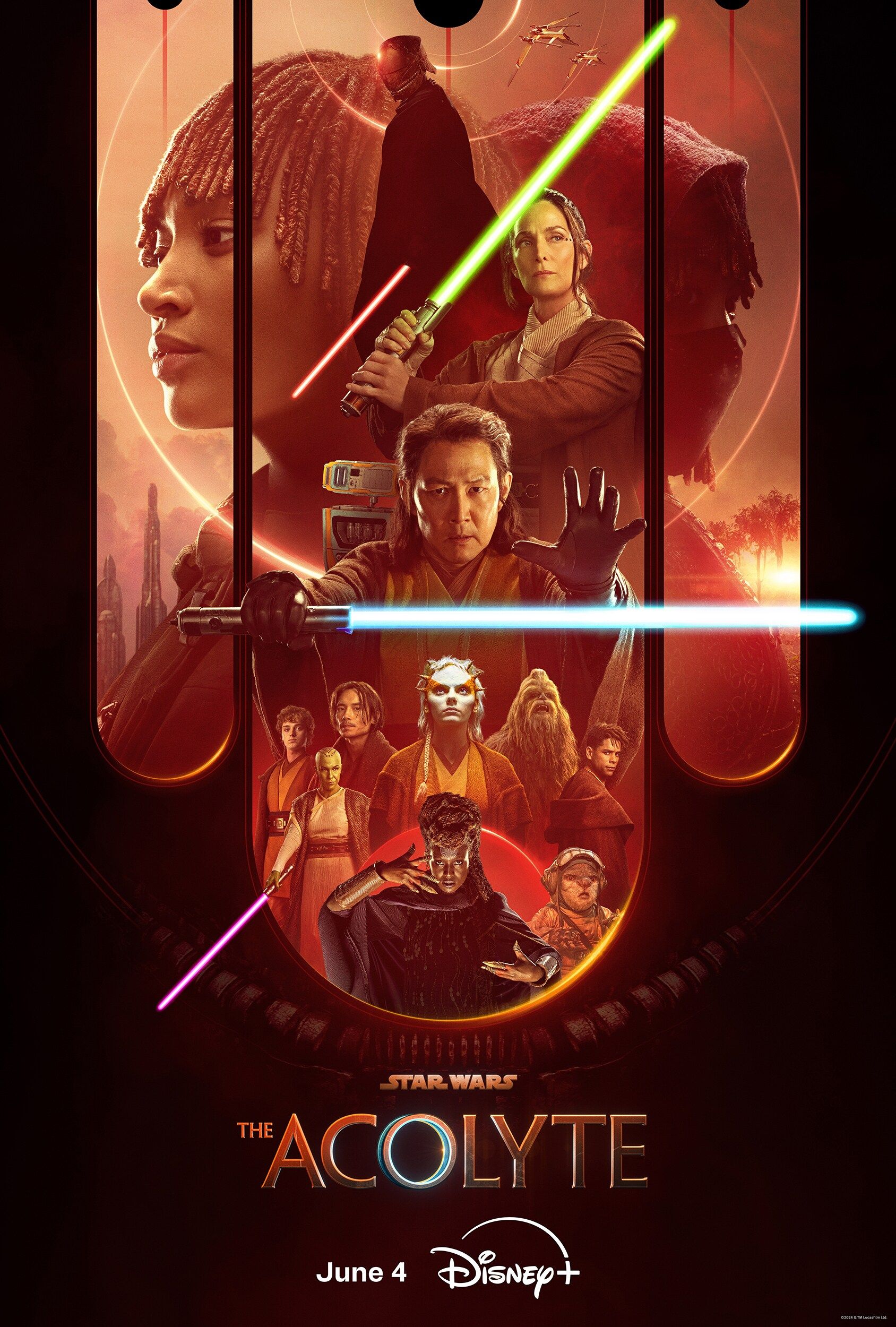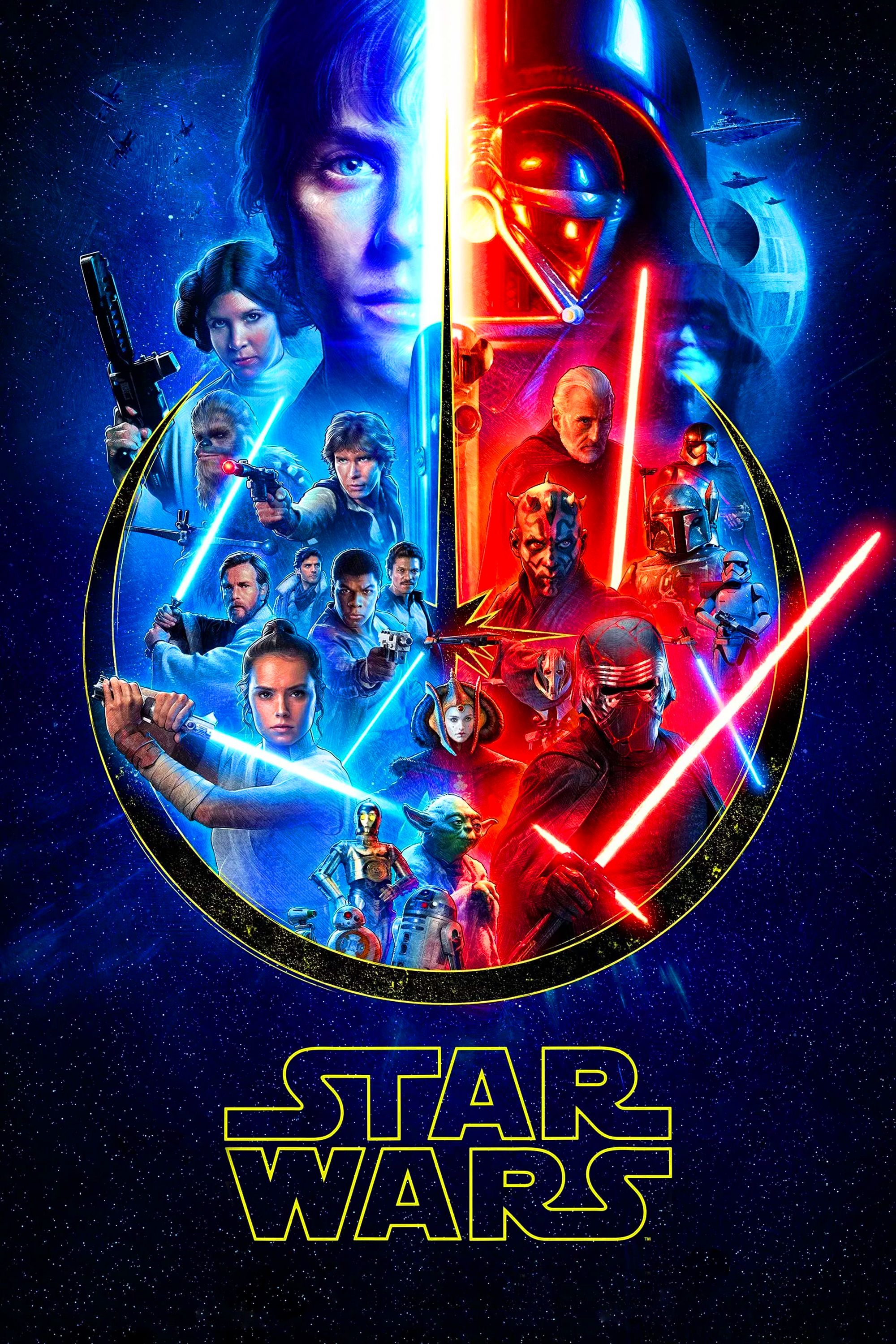All The Ways Star Wars Has Improved Lightsabers In The Last 47 Years
Summary
- Lightsabers in Star Wars have evolved over the years, but each new iteration has its own advantages and disadvantages.
- The sequel trilogy introduced practical lightsabers with glowing blades while filming, which allowed for some impressive lighting tricks.
- The Acolyte series showcases the most technologically advanced lightsabers in Star Wars history, utilizing practical props and smaller, lighter batteries.
Lightsabers have gone through quite a few changes throughout the history of Star Wars, and each method of creating the iconic visual effect through the years had advantages and drawbacks. There’s a tremendous amount of lore surrounding Star Wars‘ most famous weapon, from the meaning of lightsaber colors to the different types of lightsabers. They’re one of the most iconic parts of the entire franchise, and a symbol of the galaxy far, far away. Part of the reason they’re so influential is because they look so cool, but lightsabers haven’t always looked exactly the same over the years.
Part of why Star Wars is such a massively influential franchise is because of the studios behind it, Lucasfilm and Industrial Light and Magic (ILM). They drove visual effects forward in every era of Star Wars, from the original trilogy to The Acolyte. Corridor Crew made a very in-depth explanation of the innovations Lucasfilm and ILM made in VFX, and how they changed throughout the Skywalker saga. Those special effects have continued to evolve beyond the Star Wars movies, though, and the Star Wars shows have since added their own iterations of the classic weapons.

Related
Star Wars: All 7 Lightsaber Combat Forms Explained (& Who Used Which)
The Jedi and the Sith use seven different forms of lightsaber combat in Star Wars – here’s all you need to know about them, and who uses which.
The Original Trilogy Used Reflective Material and Rotoscoping For Its Lightsabers
The original Star Wars, later retitled A New Hope, was very ambitious in many regards, and especially with lightsabers. Paul Duncan’s “The Star Wars Archives: A New Hope” revealed how the shot of Luke first igniting his father’s lightsaber was created in 1977, years before CGI was available. It was a rather complex but incredibly creative solution: lightsaber blades were “a spinning wooden sword, coated with a reflective material,” and powered by a wire hidden in Luke’s sleeve. Then, bright lights were shined at the blade from behind the camera to give it that bright pulsing effect.
A New Hope‘s method was incredibly innovative, but it wasn’t very practical for fights, hence why Obi-Wan and Darth Vader’s duel seemed so stiff. The wooden blade couldn’t achieve the desired lightsaber look, so Star Wars‘ creators also used rotoscoping, a process that involved animating each frame by hand. That allowed the team to essentially shine a light through the film and have lightsaber blades look like actual light captured on film. Rotoscoping also added a more colorful effect to the edges of the blade than the reflective material could produce alone.
The Lightsabers In The Prequel Trilogy Were Mostly Computer Generated
The original trilogy’s lightsaber effects changed VFX forever, but both methods had some major drawbacks. They were time-consuming, labor-intensive, expensive, and they limited how lightsabers could actually be used in the film. Because of those problems, and advancements in technology between trilogies, the prequel trilogy took a very different approach to creating its lightsabers. Actors would use a metal rod on top of their hilt while filming, and the VFX team would later add in the finished lightsaber blades using CGI. That method allowed for the prequel trilogy’s lightsaber fights to be more energetic, but it also created a few problems of its own.
When the prequel trilogy began with Star Wars: Episode I – The Phantom Menace in 1999, however, CGI was still in its infancy. That made the work of creating the effect very time-consuming and difficult. It also meant that the lightsabers of the prequels sometimes seemed more simple than the original trilogy. They didn’t always pulse or feel alive, and sometimes looked more like a solid stick than a beam of intangible light. However, CGI also had a few visual advantages. Some of the effects a computer could create allowed for lightsaber blades to blur when being swung, which gave a sense of speed to the prequels’ fights.
Star Wars Has Been Using Practical Lightsabers Since The Force Awakens
Neither the original trilogy’s or prequel trilogy’s lightsaber effects were perfect, so Star Wars had another massive innovation in lightsaber technology for the sequel trilogy. Instead of using placeholder lightsabers while filming and adding the blades in later, the sequel trilogy introduced practical lightsabers that had glowing blades while filming. That method offered quite a few new opportunities. Since lightsabers gave off their own light, they could also light up actors’ faces in the films themselves, which helped them feel like real objects. The lights inside the practical lightsabers could also be programmed to turn on sequentially, which helped show lightsabers powering up.
Since Star Wars: The Force Awakens, the franchise has been using practical prop lightsabers combined with additional CGI. The physical props allowed new stories to use lighting more inventively to create visually striking moments like Darth Vader’s hallway scene in Rogue One: A Star Wars Story. Like earlier iterations, the practical props also presented a few issues. The props needed a significant amount of power to give off light, so they had large batteries that extended into the blade itself and made the entire prop quite heavy. That’s why many lightsaber duels in the Disney era featured slower, heavier swings.
The Acolyte’s Practical Lightsabers Have Their Batteries In The Handle
The most recent revolution in lightsaber technology was inspired by The Acolyte. The show still uses physical props for its lightsabers, but unlike the rest of the Disney era, The Acolyte‘s prop lightsabers have smaller batteries stored in the handle of the lightsaber. It was a seemingly small but massively important change, as that redistributed weight meant the props were easier to handle. The newest lightsaber props are essentially a blend of some of the best parts of lightsaber VFX: they give off real light like the sequel trilogy’s did, and they’re light enough to allow for advanced fight choreography like the prequel trilogy’s.
Of course, every step forward in lightsaber technology also includes some drawbacks, and The Acolyte‘s lightsaber props are no different. The show’s innovation made batteries smaller, but they’re still quite large, and the handles of The Acolyte‘s lightsabers can seem very thick and unwieldy because of that. They also didn’t solve a common critique of the era of Disney+ shows, that the lightsabers feel too tangible and sometimes seem like glow sticks. There isn’t a definitive answer to why that problem has persisted through so many Star Wars shows, but there are a couple of likely reasons.

The Acolyte
The Acolyte is a television series set in the Star Wars universe at the end of the High Republic Era, where both the Jedi and the Galactic Empire were at the height of their influence. This sci-fi thriller sees a former Padawan reunite with her former Jedi Master as they investigate several crimes – all leading to darkness erupting from beneath the surface and preparing to bring about the end of the High Republic.
- Cast
- Dafne Keen , Lee Jung-jae , Amandla Stenberg , Jodie Turner-Smith , Joonas Suotamo , Carrie-Anne Moss , Margarita Levieva , Charlie Barnett , Dean-Charles Chapman
- Showrunner
- Leslye Headland
The tangibility of Disney’s lightsabers is likely more a result of the limited budget of shows versus movies. The Skywalker saga’s movies had big enough budgets to spend quite a bit on CGI artists, whereas the Star Wars shows have less money to work with. It also could just be a matter of the shows relying more on the physical prop as its technology continues to improve, and using lightsaber CGI more sparingly in general. It could also be a product of industry errors like VFX artists being overworked and simply not having the time or resources to make lightsabers look just right.
Despite the issues, The Acolyte‘s lightsabers are still the most technologically advanced the entire Star Wars franchise has ever seen. They’re an example of how well VFX can be used, and based on the history of lightsaber VFX, they likely won’t be the last step in the evolution of lightsabers. The problems that plague The Acolyte‘s lightsaber props will almost certainly be solved sooner or later. Lightsabers, like the rest of Star Wars, have a very bright future ahead of them, and many more surprises left in store.
Purchase Paul Duncan’s “The Star Wars Archives” on Amazon.
Source: Corridor Crew






